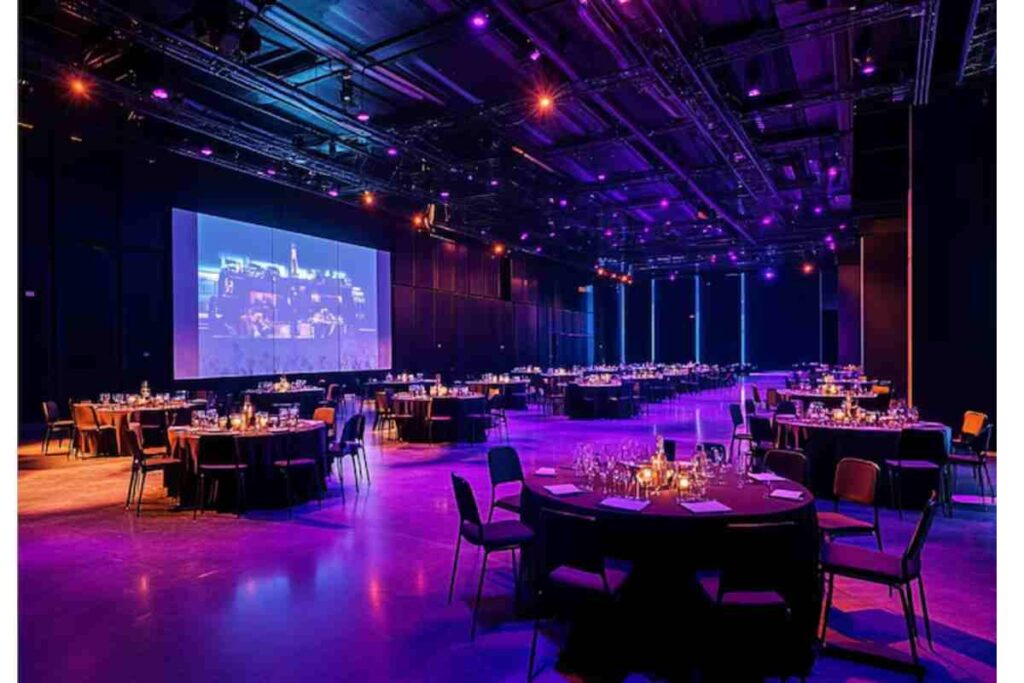Table of Contents
Eight Ways to Create an Impressive Environment for Your Events

When it comes to hosting a successful event, the atmosphere you create can make or break the experience. Whether it’s a corporate meeting, wedding, product launch, or music festival — the environment sets the tone for everything.
If you want guests to remember your event long after it ends, you need to focus on crafting a space that feels engaging, comfortable, and visually stunning.
In this article, I’ll walk you through eight effective ways to create an impressive environment for your events, from lighting and décor to sound and scent. Let’s make your next event unforgettable!
1. Define Your Event’s Purpose and Theme
Before you book a venue or pick colors, you must first define the purpose and theme of your event. The entire environment will stem from this foundation.
Ask Yourself:
-
What is the event’s main goal? (Networking, celebration, education, promotion, etc.)
-
Who is your target audience?
-
What emotions do you want attendees to feel — excitement, elegance, comfort, innovation?
Once you answer these questions, everything — from venue selection to lighting design — becomes easier to plan. For example:
-
A corporate seminar may call for a minimalist, professional setting with neutral tones.
-
A product launch might thrive in a sleek, tech-forward environment.
-
A wedding or gala could demand warm, romantic lighting and floral accents.
Defining your theme helps you maintain consistency and prevents the space from feeling disorganized or random.
2. Choose the Perfect Venue
Your venue choice is the backbone of your event environment. It influences layout, lighting, acoustics, and even your guests’ mood.
Key Tips for Selecting the Right Venue:
-
Match the venue to your theme: A beachside venue works for casual summer events, while a ballroom fits formal affairs.
-
Consider accessibility: Make sure guests can easily find parking or public transport options.
-
Check capacity: A too-small venue feels cramped, while an oversized one feels empty.
-
Think about natural light: Spaces with windows or open areas feel more inviting.
-
Evaluate amenities: Ensure the venue supports your technical needs (sound systems, Wi-Fi, AV setups).
In cities like London or New York, many event planners opt for hybrid venues — places that combine indoor and outdoor spaces for flexibility. This adds layers of interest and allows smooth transitions between event segments.
3. Set the Mood with Lighting
Lighting is one of the most powerful tools for creating atmosphere. It can change the entire mood of a space within seconds.
Lighting Ideas That Impress:
-
Uplighting: Adds depth and color to walls or drapes.
-
Spotlighting: Highlights speakers, art, or products.
-
Fairy lights and string lights: Great for weddings, garden parties, or evening receptions.
-
LED walls and projections: Ideal for tech events and product demos.
-
Candlelight or soft lamps: Perfect for cozy or intimate settings.
Don’t underestimate lighting color — warm tones make guests feel relaxed, while cooler hues create a modern, high-energy vibe.
For large events, consider hiring a professional lighting designer who can sync lights with music or visuals for a wow factor.
4. Use Smart Décor and Visual Elements
Décor brings personality and creativity into your event space. The right decorations help transform even simple venues into something spectacular.
Creative Décor Ideas:
-
Themed centerpieces: Reflect your event’s purpose through table arrangements, props, or digital displays.
-
Backdrops and photo booths: Encourage social sharing while adding visual appeal.
-
Floral arrangements or greenery walls: Add freshness and texture.
-
Color palette consistency: Stick to 2–3 main colors that align with your brand or theme.
-
Statement pieces: Think neon signage, large art installations, or branded sculptures.
If your budget allows, work with a professional event designer who understands balance and visual storytelling. Every corner should contribute to the overall experience.
5. Pay Attention to Sound and Music
Sound is just as important as visuals when creating an impressive environment. The wrong sound setup can ruin even the best-decorated venue.
Sound and Music Tips:
-
Invest in quality speakers: Ensure even sound distribution across the space.
-
Choose music that matches the mood: Soft jazz for cocktail events, upbeat pop for product launches, or ambient tunes for networking sessions.
-
Consider live performances: A live band, DJ, or acoustic set can add excitement and personalization.
-
Control noise levels: Background music should enhance conversations, not overpower them.
If your event includes presentations or speeches, test all microphones and AV systems beforehand to avoid technical glitches.
6. Enhance the Experience with Scent and Ambience
Want to make your event truly memorable? Don’t forget about the sense of smell. Scents are directly tied to emotion and memory, making them a powerful tool for event environments.
How to Use Scent Strategically:
-
Subtle air diffusers: Use lavender, citrus, or sandalwood scents depending on your theme.
-
Fresh flowers: They naturally add fragrance and beauty.
-
Thematic aromas: For instance, a beach-themed event might include coconut or ocean-inspired scents.
Be careful not to go overboard — the goal is to enhance the environment, not overwhelm it. Choose hypoallergenic scents and ensure good ventilation.
7. Incorporate Interactive and Digital Elements
Modern events thrive on engagement. Incorporating interactive and tech-driven features keeps guests involved and creates a lasting impression.
Innovative Ideas:
-
AR/VR experiences: Perfect for exhibitions or product demos.
-
LED screens and projection mapping: Transform plain walls into dynamic storytelling spaces.
-
Interactive booths or games: Great for brand activations or conferences.
-
Hashtag walls or live polls: Encourage audience participation through social media.
-
Digital guestbooks or touchscreens: Add a futuristic touch while gathering feedback.
These elements not only entertain but also generate valuable data and social engagement — giving your event more visibility online.
8. Focus on Comfort and Guest Flow
Even the most beautiful setup can fail if guests feel uncomfortable or confused about where to go. The comfort and flow of your event are key to maintaining positive energy.
Comfort Checklist:
-
Seating arrangements: Offer both standing and seating options, depending on event type.
-
Temperature control: Keep the room cool in summer and cozy in winter.
-
Signage and directions: Make navigation easy with clear signs and helpful staff.
-
Food and beverage stations: Keep them accessible but away from crowded zones.
-
Breakout areas: Give guests places to relax, chat, or take a quick breather.
Think like an attendee. Walk through the space before the event and adjust anything that might feel awkward or confusing.
Bonus Tip: Add a Personal Touch
People remember how an event made them feel — not just what it looked like. Small personal touches can elevate your event from good to unforgettable.
Ideas to Add Warmth and Personality:
-
Personalized welcome notes or digital invitations.
-
Branded gift bags or photo souvenirs.
-
Thoughtful thank-you messages after the event.
-
Friendly hosts or greeters at the entrance.
When you combine these small gestures with a well-planned environment, guests feel appreciated — and that’s the real secret to event success.
The Power of a Well-Crafted Event Environment
An impressive environment is not about extravagance; it’s about intentional design and thoughtful details.
Every element — from lighting and music to seating and scent — works together to create a cohesive experience that reflects your event’s story.
By following these eight ways, you’ll be able to craft an environment that:
-
Captures attention
-
Engages the senses
-
Encourages interaction
-
Leaves a lasting impression
Whether you’re planning a private celebration or a large-scale corporate event, remember: the best events feel seamless, immersive, and full of life.
Final Thoughts
Creating an impressive event environment doesn’t have to be overwhelming. With a clear vision, smart planning, and attention to sensory details, you can design an atmosphere that wows your guests from the moment they walk in.
At the end of the day, your goal is simple — to make your event feel unforgettable.
Follow these eight strategies, and you’ll turn any space into a remarkable experience that guests will talk about for years.

